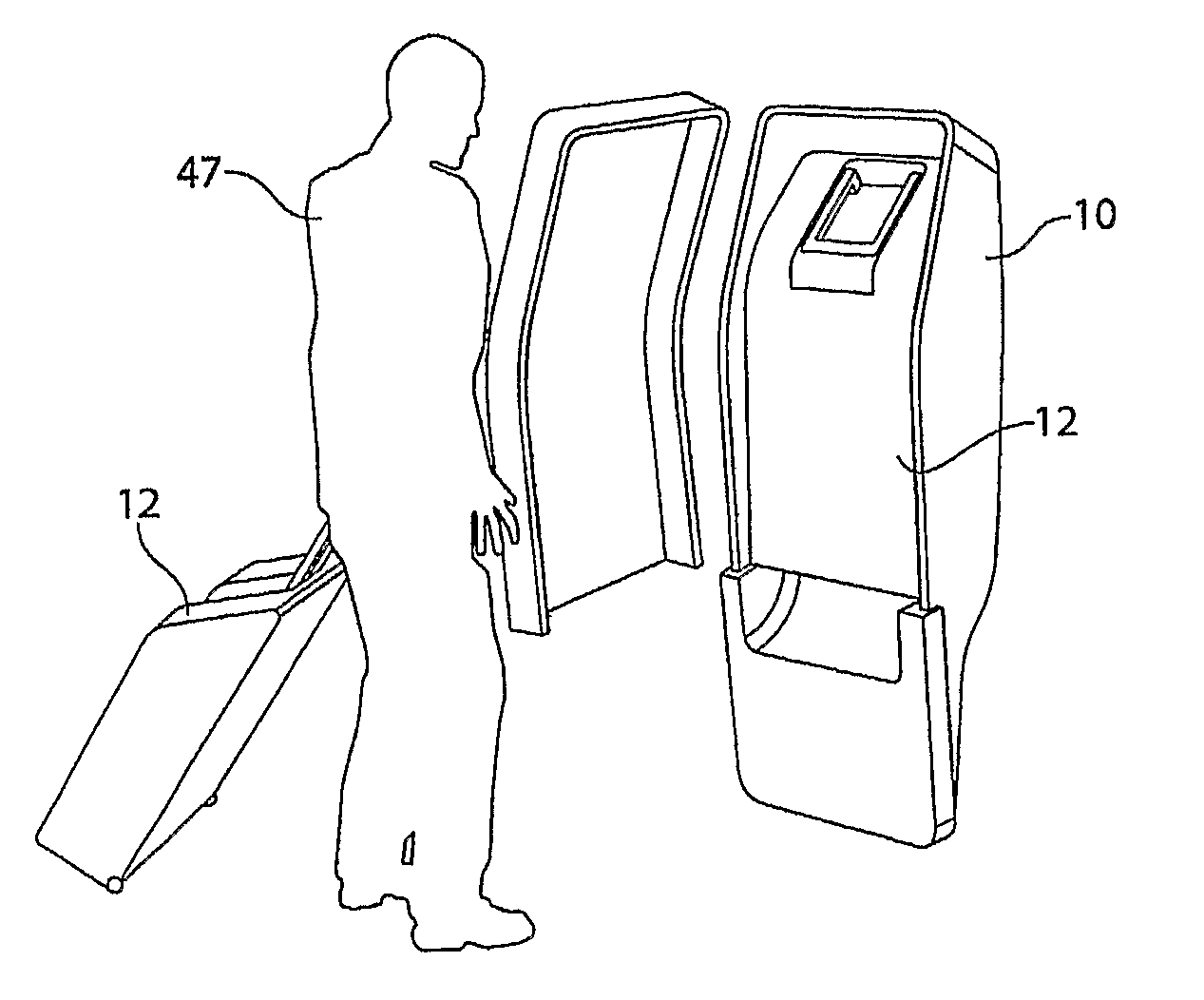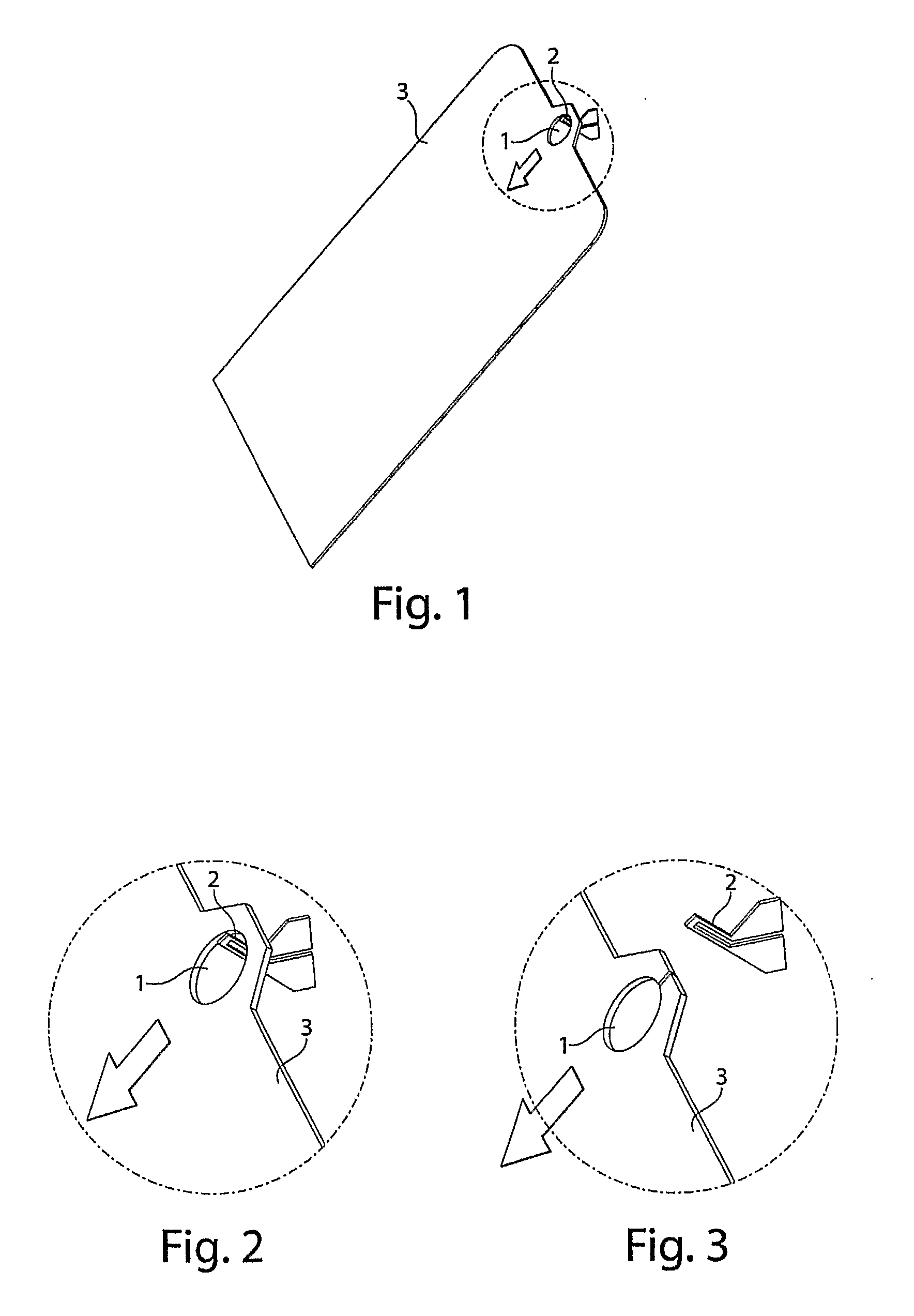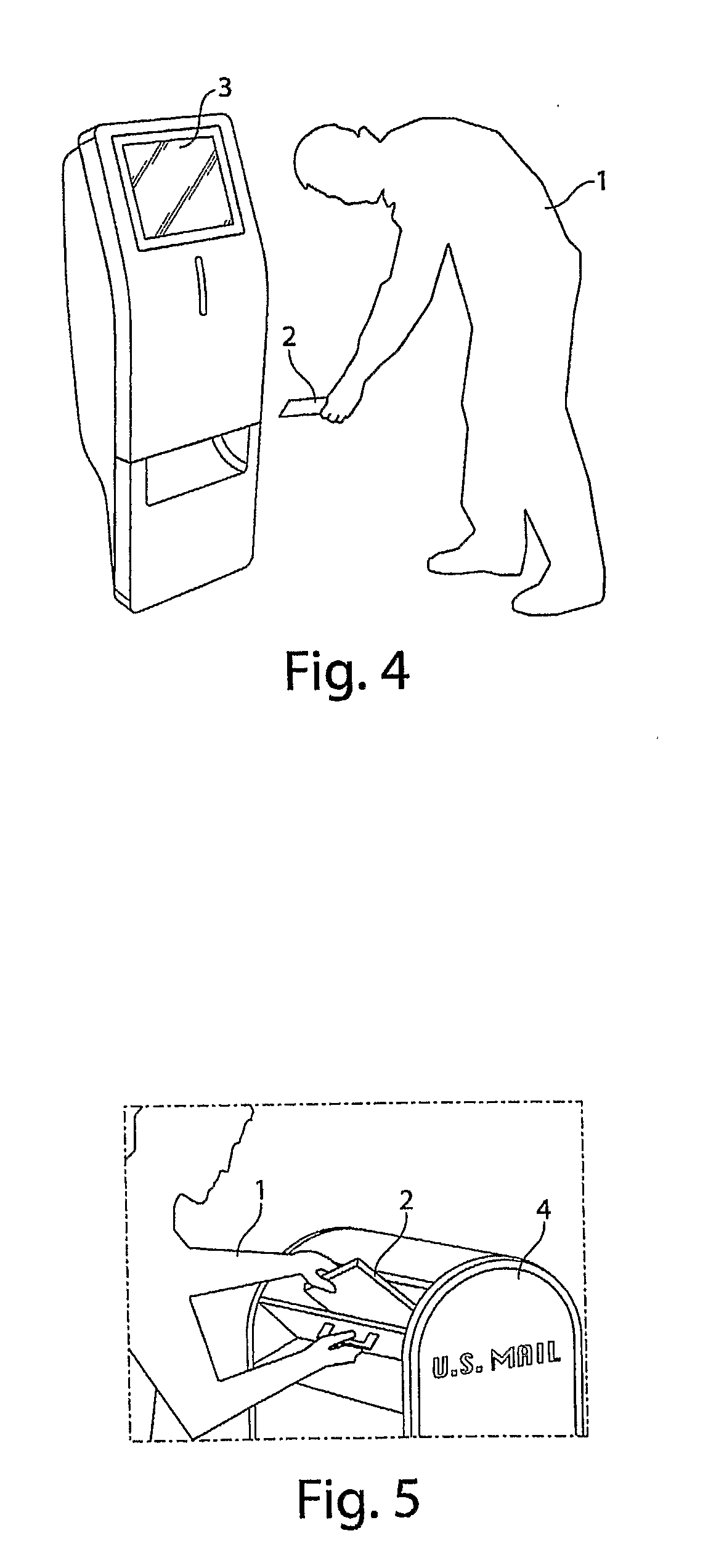[0006]Dispensing without moving parts of the device can be avoided in an embodiment by using a
retainer comprising at least one securing component, at least a portion of which is
electrically conductive, constructed and arranged to secure the a
package containing the article when the securing component is in a first state in which no electrical potential or an electrical potential of a first value is applied to the securing component and to release the article by applying sufficient current to heat the
electrically conductive portion of the
retainer sufficiently to cause failure of a portion of the
package and release of the article from the securing component when the securing component is in a second state in which a second value is applied to the securing component.
[0007]Alternatively, dispensing can be achieved without moving parts of the device where each article is retained in a
package and each
retainer comprises a projection comprising an
electrically conductive material from which the package hangs, wherein, when an
electric current is applied to the electrically conductive material, it heats and it melts through the portion of the package hanging from the projection, releasing the package. The securing component can be made from
titanium, and the package can be made of styrofoam,
polypropylene, or very fine, high-density
polyethylene fibers, such as
TYVEK®.
[0015]In one embodiment, the kiosk contains no moving parts for dispensing the titles, reducing the chance of
mechanical failure or improperly dispensed product and providing a space savings. The titles are preferably located in the kiosk in packages, such as envelopes. Each package is suspended from a piece of
metal, such as a wire or tab, and the packages are staggered at an angle so that they do not interfere with each other. When a user makes a selection and purchase or rental, the kiosk applies an
electric current to the
metal, melting the part of the package it contacts and allowing it to fall into the dispensing slot due to gravity. The package preferably is suspended from the tab by a hole in the package, and the
electric current heats the
metal to a temperature sufficient to
cut through the portion of the package hanging on the tab or wire by melting that portion of the package. The package is preferably made from a relatively
low melting point material, such as Styrofoam,
polypropylene, or
TYVEK®. The metal is preferably made from a material that heats in response to a current, such a
titanium. The package containing the title can also be used to return the title. The package functions as a mailer. When a user is finished with the title, the user can return the title to the mailer, close the mailer, seal it, and return it to the vendor via a mail service. The envelope or mailer can already contain postage, the user can provide the postage, or the package can preferably be postage-paid. The mailer can contain terms of rental, directions for use, and advertisements. If the title is not returned in a certain period, a purchase price can be charged to the customer.
[0017]The kiosk in one embodiment has a three-dimensional design to appear aesthetically pleasing from all sides. The kiosk can be secured by affixing it to the ground (e.g., floor or sidewalk) with an
adhesive. A preferred
adhesive is a
silicon based
adhesive, which can be removed by a
solvent, such as a ultra-pure
siloxane containing
solvent. The kiosk can be readily relocated by dissolving the
solvent. Its small size allows
relocation to be accomplished by one person. The kiosk can include an RFID device to increase security.
[0022]The entire selection of
physical media in the kiosk is located in a removable container. This container is exchanged by another one that has been replenished by a standard delivery company such as UPS and Federal Express, avoiding the need for dedicated vehicles. The removable container, hereinafter referred to as “cartridge” or “
magazine”, has the weight and size such that a single person can extract it from the kiosk to be able to insert its replacement. It can have wheels to allow easy transport by one person. In addition, by use of a device, such as an RFID, the kiosk can sense the proximity of the replacement
magazine and open automatically. Thus, the delivery personnel can change the
magazine without the use of any special skill or tool by simply removing the old magazine and replacing it with the new magazine. The delivery personnel could close the door, or the kiosk could do that automatically, such as when the old magazine is no longer nearby. To facilitate replenishment by a delivery company, the magazines can contain address
label(s). The address
label(s) can be printed at the central hub and it could be changed, covered, and / or removed by the kiosk to
expose the return
label.
[0023]The magazine can then be transported by the delivery company to a central hub for replenishment. The replenishment of the magazine at the central hub can be done manually or automatically. The magazines are replenished with a selection of titles that is specially suited to fulfill the demand of a specific kiosk based upon the past popularity of each title. New releases are particularly preferred. Centralized replenishment allows stronger
quality control and keeps inventory to a minimum because there is no need for each
technician visiting kiosks to replenish them to have a sufficient number and selection of movies to replenish each kiosk.
 Login to View More
Login to View More  Login to View More
Login to View More 


